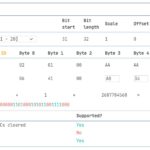Introduction
Navigating the world of automotive diagnostics can be complex, especially when dealing with older vehicles and engine swaps. For owners of the Nissan 240sx, a popular platform for modification and performance upgrades, understanding the On-Board Diagnostics (OBD) system is crucial. A common question arises, particularly for those working with 1995 models: is my 240sx OBD2 or OBD1? And how does this impact engine swaps and modifications, especially concerning components like the engine harness and oxygen sensors? This article aims to clarify the OBD status of the 240sx, specifically addressing the nuances of the 1995 model year and its implications for your projects.
OBD-I vs. OBD-II: A Brief History
To understand the 240sx OBD situation, it’s helpful to grasp the evolution of OBD systems. On-Board Diagnostics systems were introduced to monitor vehicle emissions and engine health, driven by environmental regulations like the Clean Air Act in the United States.
OBD-I: The first generation, OBD-I, emerged in the late 1980s and became more standardized in the early 1990s. Mandated for 1991 and newer vehicles, OBD-I systems were designed to detect significant emissions failures. However, these early systems had limitations. They often only flagged complete component failures and, in some cases, vehicles could still pass emissions tests despite underlying issues. Diagnostic information retrieval was also not standardized across manufacturers, making repairs potentially cumbersome.
OBD-II: Recognizing the shortcomings of OBD-I, stricter regulations led to the development of OBD-II. This second-generation system became mandatory for all vehicles sold in the U.S. starting January 1, 1996. OBD-II offered significant improvements, including enhanced monitoring of emissions components, a standardized diagnostic connector, and a wider range of diagnostic trouble codes (DTCs). This standardization simplified diagnostics and repairs, and provided more comprehensive data for technicians.
The 1995 Nissan 240sx: An OBD-II Pioneer
Now, let’s address the specific case of the 1995 Nissan 240sx. Despite the OBD-II mandate officially starting in 1996, Nissan proactively implemented OBD-II technology in its 1995 model year 240sx vehicles. Therefore, a 1995 Nissan 240sx is indeed OBD-II compliant.
This early adoption means that your 1995 240sx is equipped with the more advanced OBD-II system, offering better diagnostic capabilities compared to OBD-I. This is important to remember when considering engine swaps or troubleshooting engine-related issues.
Understanding Oxygen Sensors and Engine Harnesses in 1995 240sx Models
While all 1995 240sx models are OBD-II compliant in terms of diagnostic protocol, there can be variations within the 1995 production year, particularly concerning components like oxygen (O2) sensors and engine harnesses.
Oxygen Sensors: Early production 1995 240sx models (manufactured roughly between February 1994 and July 1995) might come equipped with a one-wire upstream O2 sensor. Later 1995 models and all 1996 and newer S14 240sx models typically use a three-wire O2 sensor.
The difference lies in the sensor’s functionality. A one-wire O2 sensor primarily sends a signal to the Engine Control Unit (ECU) regarding the oxygen content in the exhaust. In contrast, a three-wire O2 sensor incorporates a heater circuit and a ground circuit in addition to the signal wire. This heater circuit allows the three-wire sensor to reach its operating temperature faster, especially during cold starts, leading to more efficient emissions control.
Engine Harness Connectors: You mentioned receiving a 5-speed engine harness with a white connector for the ECU, which you’ve read might indicate an OBD-II harness. This is generally consistent with OBD-II systems. OBD-II ECUs and harnesses often utilize different connector types compared to OBD-I systems.
Troubleshooting Your 240sx OBD System and Engine Swap
Given this information, let’s address the potential issues you might face when installing your 5-speed swap and new KA24DE engine into your 1995 240sx:
-
OBD-II Compatibility: Since your 1995 240sx is OBD-II, and you have an engine harness and ECU that appear to be OBD-II compatible (white connector), you are likely on the right track in terms of basic system compatibility.
-
Oxygen Sensor Considerations:
- Identify your O2 sensor: Check your existing exhaust manifold (or the old engine if possible) to determine if it used a one-wire or three-wire upstream O2 sensor.
- Match the sensor to your harness/ECU: Ensure the O2 sensor you use is compatible with the engine harness and ECU you are installing. If your new engine harness is designed for a three-wire sensor, but your exhaust manifold is set up for a one-wire sensor, you may need to address this discrepancy. Options could include:
- Using a three-wire sensor and ensuring proper wiring if necessary.
- If sticking with a one-wire sensor, verify compatibility with your ECU and harness.
-
OBD-II Diagnostic Port Location:
- Early 1995 models: The OBD-II diagnostic port is typically located on the passenger side, near the heater area, often under the center console.
- Late 1995 models: The OBD-II port is usually found under the dashboard on the driver’s side, near the hood release.
- Locate your OBD-II port to confirm you can access it for diagnostics after the swap.
Conclusion
In summary, your 1995 Nissan 240sx is OBD-II compliant, which is beneficial for diagnostics and engine management. When performing your engine swap, pay close attention to the oxygen sensor type and ensure compatibility with your engine harness and ECU. Understanding these nuances will help ensure a smoother swap and proper functioning of your 240sx’s engine management and diagnostic systems. By addressing these points, you’ll be well-equipped to tackle your 240sx project with confidence.
